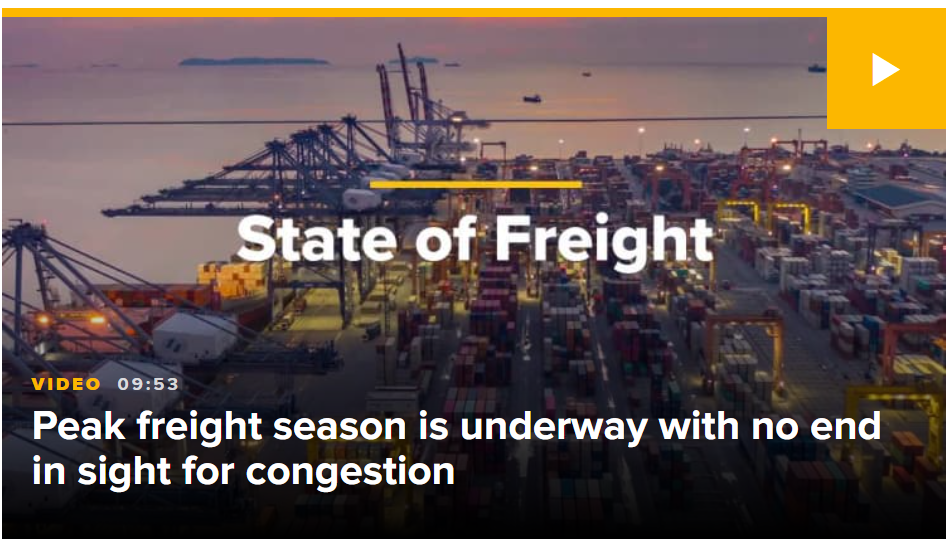Peak freight season is underway and there’s no end in sight for congestion
Tuesday, 30 August 2022

Peak season for ocean freight is underway and DHL Global Forwarding says it’s way too early to declare a softening in trade volumes and a decrease in congestion.
“We are not yet really out of the woods when it comes to congestion,” said Goetz Alebrand, Ocean Freight Head for the Americas region of DHL Global Forwarding. “The supply chains that are ocean based around the world, are very, very vulnerable to these interruptions or disruptions so it’s really difficult to say right now how these disruptions will impact overall volumes.”
The maritime and logistics industry has been in a continuous loop of problems fueling congestion. Land capacity issues creating port and terminal congestion, a lack of railcars, and the unavailability of truckers and chassis have impacted all trade participants.
“This may result in a longer dwell time for containers and higher costs for the importers and exporters,” said Alebrand. “There are still a lot of unknowns given a possible incoming global recession, and supply chain bottlenecks are apparent around the world.”
Alebrand says they are watching the port labor negotiations closely. The impact of the strife has been documented by the CNBC Supply Chain Heat Map:
“This is prompting delays to schedules and more blank (cancelled) sailings from carriers,” said Alebrand. “Our DHL Ocean Freight Update also highlighted that the equipment (container) situation also remains tight, especially for 40ft containers.”
Both cancelled sailings reduce the number of ships available to transport freight and the tight supply of containers are two of the factors that can influence the increase in container prices.
Heading into Golden Week, the eight-day holiday in the first week of October in China, more sailings are expected to be cancelled as manufacturers will be shut down so less trade will move out of the ports.
IMO 2023 Impact on Ocean Shipping
In 2023, Alebrand tells CNBC they are advising clients the next phase of the IMO program to reduce carbon emissions in maritime will take vessels out of rotation. This can put pressure on freight prices.
Global shipping accounts for about three percent of the world’s annual carbon emissions. The industry has faced growing pressure to reduce its pollution and contribute to the international goal of net-zero carbon emissions by 2050.
“Ocean carriers will have to put vessels into drydock to retrofit them with scrubbers to reduce sulfur emissions,” said Alebrand. “The Idle fleet is still at a historic low point. So I believe that’s also an indicator that we can expect in the fourth quarter and in the first quarter next year, more idle capacity because vessels have to be retrofitted to meet the IMO 2023 standards.”
MORE NEWS : Qatar Cargo provides future freighter insights
Turning Point?
Alebrand says the best tool in the logistics toolbox is visibility and transparency applications and analysis.
“This is the only way for logistics managers to be ready to adapt as the situation is changing,” said Alebrand. “There’s a lot of uncertainty in the market and you need to know what is driving the spot markets. We are cautioning right now people are looking at freight rates softening and believe this is now a turning point. We have to work through over the next couple of quarters until we are back into a state where it’s more predictable to ship cargo on the ocean on ocean systems. So in our reality, I think it will take long into next year until we see stability.”

06 January 2025
Hurricane Beryl trims cargo volumes in Houston and New Orleans

25 January 2025
Container freight rates tumble

08 February 2025

